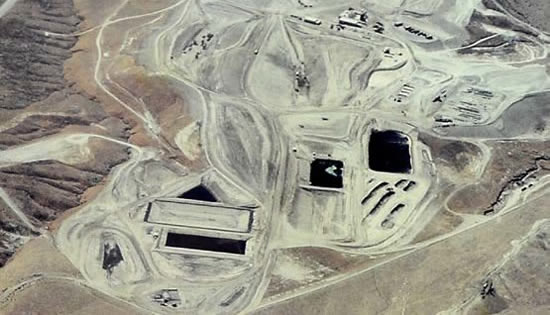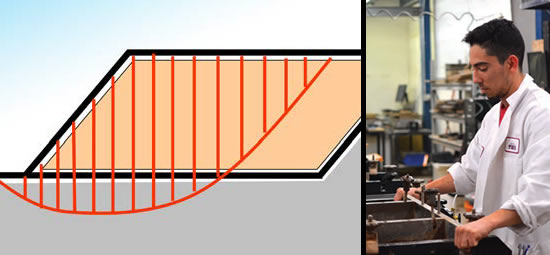Containment facilities require multiple geosynthetics, which creates a need to design with a strong understanding of the interface between soils and geosynthetics and between different geosynthetics. The new short course, Slope Stability of Containment Systems, will address this topic May 23 – 24 in Austin, Texas.

The presenters for the course represent the geosynthetics testing and environmental consulting sides of the field:
- Jeffrey Kuhn, P.E. (TRI Environmental)
- Ranjiv Gupta, P.E. (Geosyntec Consultants)
DOWNLOAD SHORT COURSE BROCHURE
REGISTER ONLINE
SLOPE STABILITY OF CONTAINMENT SYSTEMS

The short course, worth 8 PDHs, will be held at TRI Environmental. The education will be divided into two parts:
- Part 1 will focus on slope stability of containment structures, including an overview of sources of interface strength, the difference between peak and large displacement strength for design, the relation between normal stress and failure envelopes, and slope stability calculations.
- Part 2 will provide an explanation of ASTM D5321 (large-scale direct shear test for geosynthetics), including detailed discussion of test parameters. Procedural implications of specimen anchorage, normal stress application, machine friction and calibration, rate of shear, and reporting mechanisms will be discussed. In addition, limitations of the ASTM D5321 test will be explored, with explanation of alternative tests including torsional shear, tilt table, and double interface shear. Special emphasis will be placed on specifying a meaningful shear test that will best serve the user’s project requirements. The forensic analysis of several slope failure case studies will be presented to help relate the material presented during the course with real-world applications.
The course is designed for design, consulting and certifying Engineers; construction and quality assurance managers; manufacturers, installers, and contractors; third-party inspectors; and regulators.
ADDITIONAL COURSE DETAILS
In releasing details on the short course, the organizers write:
Modern waste containment structures (municipal and hazardous waste landfills, coal ash surface impoundments, heap leach pads) are constructed using multiple layers of geosynthetic materials such as geomembranes, geotextiles, geonets, geocomposites, and geosynthetic clay liners (GCL). The design of a containment structure not only requires an understanding of the properties of each individual geosynthetic material but also the ability to comprehend the interaction mechanism (friction) between various geosynthetic layer interfaces. This understanding of interface friction between various geosynthetic layers becomes even more challenging as the interface governing slope stability of the containment structure may change depending on if the project is in a construction phase, a waste filling phase, or being closed with a final cover system.

The standard test method for the evaluation of friction between one geosynthetic and another or between soil and a geosynthetic is ASTM D5321 (large-scale direct shear test for geosynthetics) and ASTM D6243 (determining internal and interface shear strength of GCLs). While these tests are simple in concept, the generated test results are significantly affected by the test parameters and the procedures used for testing the materials. As a result, understanding the specifications for interface friction testing and how to interpret and use generated test results becomes a crucial part of an engineering project.
The presenters, one from the geosynthetics testing industry and one from geoenvironmental consulting industry, will address a broad range of issues related to laboratory testing and design of containment structures.
For questions about the Course or Registration, please contact Friction@TRI-ENV.com.
DOWNLOAD SHORT COURSE BROCHURE
REGISTER ONLINE











